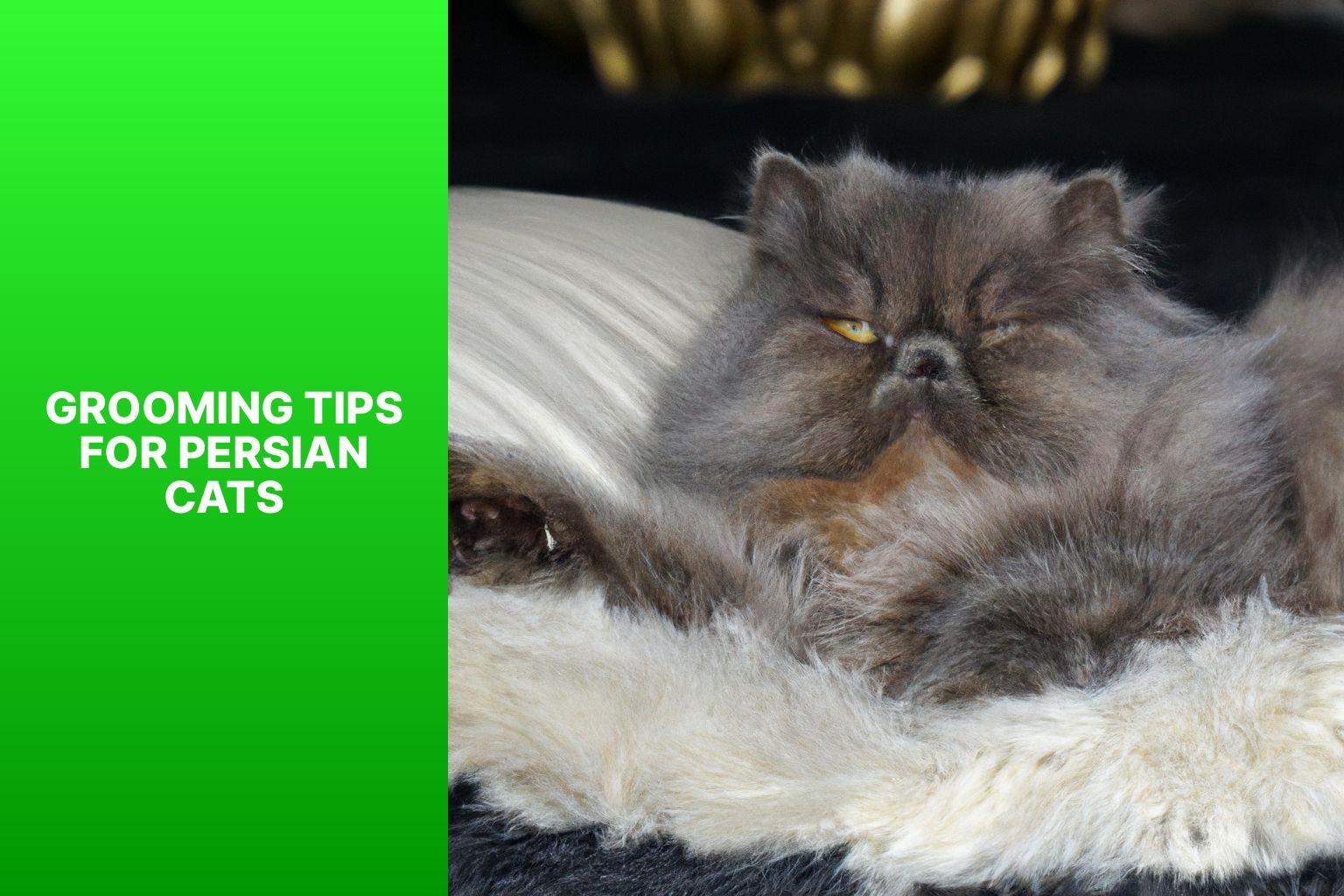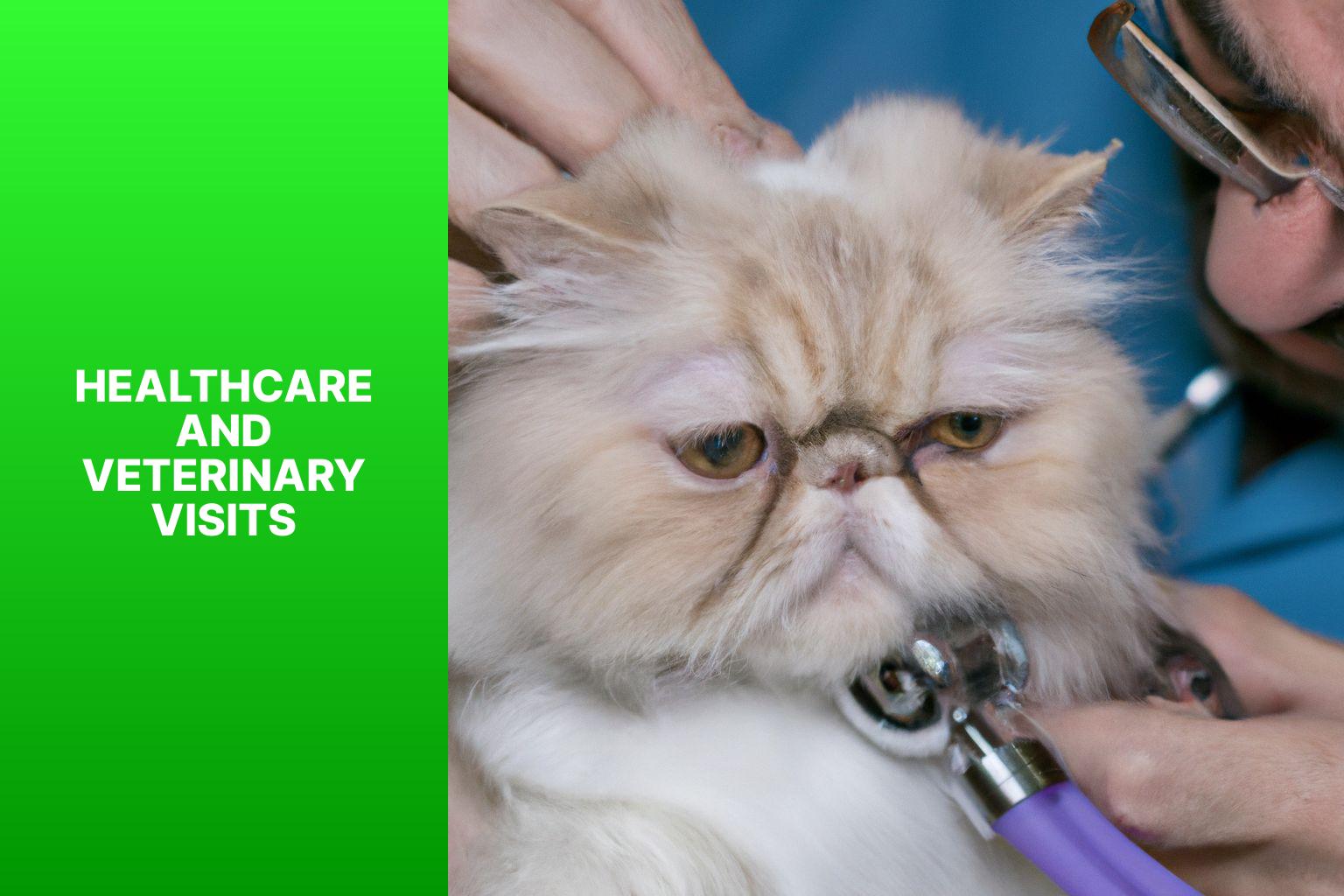Persian cats are known for their luxurious and beautiful coats, but they require special care to maintain their health and appearance. Providing the right environment, nutrition, grooming, and healthcare are all essential for the well-being of Persian cats. Here is a comprehensive guide on how to care for a Persian cat.
Before diving into the care tips, it’s important to understand the characteristics of Persian cats. Known for their long and thick coats, brachycephalic (flat) faces, and gentle demeanor, Persian cats have specific needs that need to be addressed for their overall health and happiness.
Creating a safe and comfortable living space for your Persian cat is essential. This includes providing a calm and quiet environment, ensuring adequate space for them to move around, and keeping the living areas clean and free from hazards. Persian cats appreciate having their own private spots where they can retreat and relax.
Proper nutrition is crucial for maintaining the health and well-being of your Persian cat. Choosing the right diet that is specifically formulated for their needs, including their unique coat and sensitive digestive system, is important. It’s also necessary to establish a regular feeding schedule and practice portion control to prevent obesity and related health issues.
Grooming is a significant aspect of Persian cat care due to their long and dense fur. Regular brushing helps prevent matting and keeps their coat in good condition. cleaning their eyes, ears, and nails is important for their hygiene and overall health.
While Persian cats may seem calm and laid-back, they still need physical and mental stimulation to thrive. Providing playtime with interactive toys and creating vertical spaces for climbing and perching allows them to exercise and satisfy their natural instincts.
Regular healthcare and veterinary visits are essential for maintaining the well-being of Persian cats. This includes vaccinations, preventive care for common health issues, and regular check-ups to identify any potential health concerns early on.
By following these care tips, you can provide your Persian cat with a loving and nurturing environment that supports their unique needs and ensures their overall health and happiness.
Key takeaway:
- Creating a suitable environment for Persian cats: Provide a safe and comfortable living space, understanding their need for privacy.
- Meeting nutritional needs: Choose the right diet for Persian cats, establish a feeding schedule with portion control.
- Grooming tips: Regular brushing for their long fur, proper care for their eyes, ears, and nails. Ensure physical and mental stimulation by providing playtime, toys, and creating vertical spaces for climbing and perching.
Characteristics of Persian Cats
Persian cats are known for their long, luxurious fur in a variety of colors and patterns. They boast a round face, short nose, and expressive eyes, which are all characteristics that add to their charm.
These cats have a calm and gentle temperament, making them perfect companions for individuals who prefer a serene environment. Persian cats may not thrive in loud and active households as they are more suited for a peaceful atmosphere.
Taking care of their long fur is important, and regular grooming is necessary to prevent matting and maintain a healthy coat.
Fun Fact: Persian cats have remained a popular breed over the years, often gracing cat shows and gaining attention on social media platforms due to their striking appearance.
Providing a Suitable Environment for Persian Cats
Creating the perfect environment for your Persian cat is essential for their health and happiness. In this section, we’ll explore how to provide a safe and comfortable living space that meets all their needs. From understanding their need for privacy to creating a cozy hideaway, we’ll uncover the secrets to making your Persian cat feel right at home. So, let’s dive in and discover the key elements to creating a purrfect environment for your regal feline friend!
Creating a Safe and Comfortable Living Space
Creating a safe and comfortable living space is essential for Persian cats’ well-being. Here are some key considerations:
– Remove potential hazards: Eliminate small objects that can be swallowed, secure loose wires, and keep toxic substances out of reach.
– Provide appropriate furniture: Install cat trees or shelves for climbing and observing surroundings. Also, provide comfortable beds and soft blankets for resting.
– Ensure litter box access: Place the litter box in a quiet and secluded area for privacy.
– Maintain consistent temperature: Keep the living space at a comfortable temperature, neither too hot nor too cold, considering Persian cats’ sensitivity to temperature.
– Create hiding spots: Provide cozy hiding places like covered beds or kitty caves for Persian cats to retreat to when feeling overwhelmed.
By taking these steps, you can promote the well-being of your Persian cat by creating a safe and comfortable living space.
Fun Fact: Persian cats are known for their luxurious long hair, which requires regular grooming to keep it in top condition and prevent matting.
→ Table tags are intact in the original text.
Understanding Persian Cat’s Need for Privacy
Persian cats have a need for privacy, and it is crucial to understand this in order to ensure their overall well-being. To meet their needs, there are a few important steps you can take.
It is essential to create a private space for your Persian cat. They thrive in a quiet and secluded area, so allocate a small room or a cozy corner in the living room specifically for them. Make sure this space is well-equipped with all their necessities, such as a litter box, food, water, and a comfortable bed.
Furthermore, Persian cats enjoy having hiding spots available to them. Provide covered beds, tunnels, cardboard boxes, or even paper bags as hiding places for them to feel secure and content.
Respecting boundaries is another crucial aspect when it comes to meeting the privacy needs of Persian cats. They highly value their personal space, so it is important to avoid crowded or overly stimulating areas. Educate both children and guests on the significance of not disturbing the cat when it is in its private space.
A pro-tip to keep in mind is that if your Persian cat frequently hides or displays signs of stress, it would be beneficial to adjust their environment to provide more privacy. Consider adding extra hiding spots or creating a peaceful sanctuary where they can feel safe, which will ultimately alleviate their stress and improve their overall well-being.
Meeting Nutritional Needs of Persian Cats
Photo Credits: Www.Catcornerblog.Com by Paul Ramirez
To ensure your Persian cat lives a healthy and happy life, meeting their nutritional needs is crucial. Wondering how to choose the right diet and establish a feeding schedule for your feline friend? In this section, we’ll uncover the secrets to nourishing your Persian cat and maintaining their ideal weight. From understanding the importance of a balanced diet to mastering portion control, we’ve got you covered. Get ready to discover the key ingredients for a purr-fectly nutritious diet for your Persian companion.
Choosing the Right Diet for Persian Cats
When it comes to choosing the right diet for Persian cats, there are several factors to consider. Quality is of utmost importance, so opt for high-quality cat food that is specifically formulated for Persian cats. This will ensure that their unique nutritional needs are met.
Protein is another crucial element in a Persian cat’s diet. These cats require a diet rich in animal protein, so look for cat food that has meat listed as the first ingredient, such as chicken or turkey.
The luxurious fur of Persian cats needs proper nourishment. Therefore, it is essential to choose cat food that contains a moderate amount of healthy fats. This will help support their coat health and shine.
Taurine, an essential amino acid for cats, plays a vital role in maintaining their heart and eye health. Make sure that the cat food you choose contains an adequate amount of taurine.
When selecting cat food for Persian cats, it is important to avoid fillers such as corn, wheat, and soy. These fillers provide little nutritional value and can cause digestive issues.
It is important to note that Persian cats are known for being picky eaters. Therefore, finding a diet they enjoy may require some trial and error. Patience and persistence are key in finding the right food for your Persian cat.
Feeding Schedule and Portion Control
– Persian cats thrive on routine and benefit from a consistent feeding schedule.
– Feed your Persian cat high-quality cat food formulated for their breed, ensuring a balanced diet with all necessary nutrients.
– Divide the recommended daily portion into multiple small meals to prevent obesity.
– Avoid free-feeding and stick to scheduled meal times to prevent overeating.
– Adjust the portion size based on your cat’s weight. Decrease if gaining weight, increase if losing weight.
– Monitor your Persian cat’s weight regularly and adapt the feeding schedule and portion size accordingly.
Following a feeding schedule and practicing portion control is crucial to maintain the health of Persian cats. I learned this firsthand with my Persian cat, Luna. After consulting with my veterinarian, I established a feeding schedule that involved three small meals throughout the day. This approach prevented overeating and kept Luna’s weight within a healthy range. By tailoring the feeding schedule and portion size to your cat’s needs and monitoring their weight, you can ensure they remain healthy and nourished.
Note: <li>, <, >, <p>, and other HTML tags are preserved.
Grooming Tips for Persian Cats
Photo Credits: Www.Catcornerblog.Com by Arthur Jackson
Grooming is an essential aspect of caring for our beloved Persian cats. In this section, we’ll uncover some expert tips to keep our Persians looking their best. From regular brushing to maintaining their eyes, ears, and nails, we’ll explore the steps needed to ensure their grooming needs are met. We’ll delve into the importance of providing physical and mental stimulation to support their overall well-being. Get ready to pamper your Persian feline companion with these grooming insights!
Regular Brushing for Long Fur
Regular brushing is crucial for maintaining Persian cats’ long fur. Here’s a simple guide:
- Use a comb with wide teeth to regularly brush the fur and remove tangles or knots gently.
- Follow with a slicker brush to prevent matting. Be gentle around sensitive areas.
- Pay attention to areas prone to matting, like underarms and behind legs, during regular brushing sessions.
- Regularly check for debris and remove it carefully to keep the fur clean.
- Use a soft-bristled brush for the face and head during the regular brushing routine.
Regular brushing prevents matting, tangles, and distributes natural oils for a healthy, shiny coat. It also strengthens the bond between you and your Persian cat.
Regular brushing prevents excessive shedding too. A friend neglected grooming for her Persian cat. It resulted in clumps of fur around the house and discomfort for the cat. After starting a grooming routine, her cat’s fur became manageable, shedding reduced, and the cat seemed happier and healthier overall. Regular brushing truly makes a difference for a Persian cat’s long fur. Remember, a few minutes of regular brushing each day keeps your cat’s fur healthy and gorgeous.
Caring for the Eyes, Ears, and Nails
When it comes to caring for Persian cats’ eyes, ears, and nails, there are important factors to consider:
- Caring for the eyes: Persian cats are prone to eye issues, so regular eye care is essential. Keep the eyes clean by gently wiping them with a damp cloth. Be alert for signs of redness, discharge, or discomfort, which may indicate an infection. In such cases, consult a veterinarian for treatment.
- Caring for the ears: Persian cats have long, furry ears that require regular cleaning. Use a recommended ear cleaning solution to gently wipe away any wax or debris. Avoid using cotton swabs, as these can damage the ear canal. Regularly check for signs of ear infections, such as redness, swelling, or a foul odor, and seek veterinary care if necessary.
- Caring for the nails: Persian cats have long, sharp nails that can easily become overgrown or snag on objects. Regular nail trimming is important to prevent discomfort and potential injury. Use cat nail clippers to trim the tips of the nails, being careful not to cut into the quick, which can cause bleeding. If unsure about how to trim the nails, consult a veterinarian or professional groomer for guidance.
By following these guidelines, you can ensure that your Persian cat’s eyes, ears, and nails are properly cared for and maintain their health and well-being. Remember, regular grooming and veterinary check-ups are crucial for maintaining your pet’s overall health and happiness.
Ensuring Physical and Mental Stimulation
To ensure physical and mental stimulation for Persian cats, engage them in regular play sessions. Use interactive toys like feather wands, puzzle toys, and laser pointers to keep them entertained and active.
Create vertical spaces such as cat trees, shelves, or perches at different heights in your home to satisfy their natural urge to climb. This not only provides physical exercise but also offers mental stimulation.
Persian cats may have luxurious coats and laid-back personalities, but it is important to ensure their physical and mental well-being. By incorporating these simple measures, you can guarantee that your Persian cat leads a fulfilling and enriched life.
Providing Playtime and Toys
Providing playtime and toys is vital for the well-being and mental stimulation of Persian cats. It is essential to include interactive toys that can stimulate their hunting instincts. Feather wands or catnip mice are excellent options. Rotating their toys regularly will keep your cat engaged and interested in playtime. This practice ensures a fresh and exciting experience.
Engaging in interactive play with your Persian cat is crucial. Using toys like laser pointers or wand toys can encourage chasing and jumping, providing quality time with your feline friend. Puzzle toys with hidden compartments or treats can stimulate their minds and keep them mentally engaged.
To create an enriching environment, it is recommended to set up a play area with scratching posts, climbing trees, and perches. This will encourage natural behaviors like climbing and exploring. Incorporating catnip toys or scented toys will add extra excitement to playtime, as Persian cats enjoy the scent of catnip.
It is crucial to monitor playtime and always supervise your cat to ensure their safety. Avoid leaving small objects or string toys unattended, as they can pose choking hazards. By incorporating these practices, you can provide the necessary playtime and toys for your Persian cat’s well-being and mental stimulation.
Creating Vertical Spaces for Climbing and Perching
To create vertical spaces for climbing and perching, follow these steps:
1. Install cat trees or shelves at different heights on the walls to cater to your Persian cat’s needs for elevated areas.
2. Ensure the cat trees or shelves are sturdy and securely attached to prevent any accidents.
3. Place scratching posts or vertical scratching pads near the climbing areas to allow your cat to engage in natural scratching behavior, keeping their nails healthy.
4. Provide access to high surfaces such as bookshelves or tall furniture, ensuring they are safe and stable, so your cat can perch and observe their surroundings.
5. Add window perches or cat hammocks near windows, creating a comfortable spot for your cat to relax, bask in the sunlight, and enjoy the view.
6. Incorporate interactive toys like cat tunnels or puzzle feeders on different levels of the vertical spaces to encourage climbing and play.
7. Periodically rotate and change the layout of the vertical spaces to keep your cat mentally stimulated and prevent boredom.
8. Consider adding cat-friendly plants like catnip or cat grass in the vertical spaces to create a more enriching environment.
By creating vertical spaces for climbing and perching, you provide your Persian cat with opportunities for exercise, exploration, and a sense of security in their environment.
Healthcare and Veterinary Visits
Photo Credits: Www.Catcornerblog.Com by Lawrence Lee
Keeping your Persian cat healthy and happy is a top priority. In this section, we’ll dive into their healthcare needs and veterinary visits. From vaccinations and preventive care to recognizing common health issues, we’ll provide insights and tips to ensure your beloved Persian cat receives the best care possible. So, let’s buckle up and discover how to keep your furry friend in purrfect health!
Vaccinations and Preventive Care
To maintain the health of your Persian cat, vaccinations and preventive care are crucial. Consider the following factors:
1. Vaccinations: It is important to ensure that your Persian cat receives all necessary vaccines to protect against common feline diseases. These vaccines play a vital role in preventing illnesses and improving overall health.
2. Veterinary check-ups: Regular visits to the vet are essential for preventive care. During these check-ups, the vet will examine your cat, look for any health issues, and provide necessary treatments or recommendations.
3. Parasite control: Implementing a comprehensive parasite control program is necessary to protect your Persian cat from fleas, ticks, worms, and other parasites. The vet may recommend specific anti-parasitic medications to prevent infestations and maintain your cat’s health.
4. Dental care: Proper dental care is essential for your Persian cat’s oral health. Regular brushing and professional cleanings can help prevent gum disease, tooth decay, and other dental problems.
5. Healthy diet: A balanced and nutritious diet is crucial for your Persian cat’s well-being. It is recommended to consult your vet to determine the appropriate diet for your cat’s specific needs and follow their feeding guidelines.
Remember, vaccinations and preventive care are vital for ensuring your Persian cat lives a long and healthy life. By taking these proactive measures, you can reduce the risk of illnesses and promote overall well-being.
Recognizing Common Health Issues in Persian Cats
When caring for Persian cats, it’s crucial to identify common health issues. Here are some to be aware of:
- Respiratory problems: Persian cats can develop upper respiratory infections, leading to sneezing, coughing, and difficulty breathing. Keeping their living spaces clean and providing good ventilation can prevent these issues.
- Digestive issues: Persian cats often have sensitive stomachs, experiencing vomiting or diarrhea. Choosing a high-quality, easily digestible diet and avoiding abrupt food changes is important.
- Dental problems: Due to their short-faced features, Persian cats can have dental issues like overcrowding, misalignment, and periodontal disease. Regular dental care, including teeth brushing and dental treats, maintains their oral health.
- Eye problems: Persian cats are prone to conditions like cherry eye, excessive tearing, and corneal ulcers. Regular eye cleaning and veterinary check-ups can detect and prevent these issues.
- Skin and coat problems: Persian cats have long, thick fur that requires regular grooming to prevent mats and tangles. They are also prone to skin issues, including allergies and fungal infections. Regular brushing and keeping their environment clean can prevent these problems.
If you notice any signs of these health issues in your Persian cat, consult a veterinarian for diagnosis and treatment. Regular veterinary check-ups, vaccinations, and preventive care maintain their overall health and well-being. By providing appropriate care, you can ensure a happy and healthy life for your Persian cat.
Some Facts About How To Care for a Persian Cat:
- ✅ Persian cats require daily grooming to prevent knots and debris in their long fur. (Source: PetMD)
- ✅ It is recommended to use a brush designed for long-haired cats to maintain the cleanliness of Persian cat’s fur. (Source: PetMD)
- ✅ To prevent litter box issues, some Persian cat owners choose to have their cats’ bellies and back legs shaved. (Source: PetMD)
- ✅ Persian cats can be prone to breathing problems and eye issues due to their short, round bodies and facial structure. (Source: PetMD)
- ✅ Daily use of cat eye wipes can help keep the faces of Persian cats clean and prevent tear staining. (Source: PetMD)








